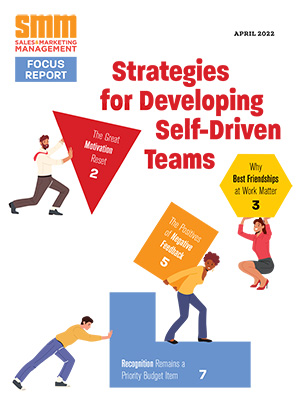Sales and marketing professionals know that the bar for effective sales and marketing engagement has never been higher. We’ve responded with audience-focused campaigns, salesforce and marketing automation, and content targeted to each buyer who influences a sale. Many companies have invested in buyer personas, data mining apps and social media listening posts.
And yet it’s hard to find buyers who say that we’ve made their decisions any easier.
Last year, my company studied 41 major B2B buying decisions. In the process, we asked more than 400 executives, managers, engineers and physicians to walk us through a recently completed purchase.
There were no surveys or scripts that might lead people to tell us what our clients wanted to hear. Instead, we relied upon a completely unscripted dialog, listening and probing as buyers explained the events that led to their search, their concerns about successful outcomes, and how they determined which suppliers were most qualified to help them. People often got so caught up in telling their stories that they lost track of the time allotted for our conversation.
Our findings reveal that we’ve got more work to do to win the prospective customer’s trust and business.
A Failure to Communicate
After a decades-long career in B2B sales and marketing, I completely understand the pressure everyone is under to persuade buyers that they need to prioritize investments in solutions like ours. But most of the buyers we interviewed said that every vendor was merely restating the obvious business benefits they already understood.
As hundreds of buyers walked us through every aspect of a major decision, people in every role told us that they had found nothing of value in the educational marketing materials built by suppliers. Many expressed annoyance with salespeople who waste their time restating even more of the same benefits.
It’s notable that even senior executives had a clear set of company and solution attributes they were evaluating as they weighed their options. Many buyers described the need for help with pre-purchase business cases or post-purchase metrics to confirm the ROI.
A senior director who had questions about security, transition planning and integration strategies said brochures from three different suppliers looked exactly alike if he merely covered up the logos. He knew in his heart that one of these companies was better equipped to help him than the others, and had found nothing that would address his questions.
Lack of Information
We’ve got delivery tools but not enough useful information
Have a look at the information we’re conveying and you’ll see decades-old feature-benefit approaches to messaging or, more recently, obvious business value benefits built for generic buyer profiles.
It stands to reason that marketers who have to guess about what buyers want to know will produce content that isn’t specific enough to be helpful. It’s easy to see why salespeople who need to challenge a prospect’s thinking or win a competitive deal must first understand the person’s existing mindset.
Facing intense competition for our buyers’ attention, we can no longer trust that sales will have the opportunity to build effective strategies one buyer at a time. We need to know how, when and why a market full of buyers thinks about the decisions we want to influence.
Armed with buying insights, we can segment audiences based on differences in the questions prospective customers ask and the answers they seek, reducing the number of assets we need to build and segments we need to serve.
For all the same reasons that salespeople who have the best account knowledge win more business, it’s time to reconsider our approach to understanding and defining our markets.
Adele Revella, the founder of Buyer Persona Institute, is the author of “Buyer Personas: How to Gain Insight Into Your Customer’s Expectations, Align Your Marketing Strategies and Win More Business.”


